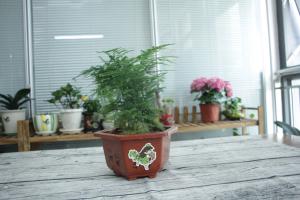Can You Plant Trees Over an Easement?
Planting trees is a great way to improve the environment and increase the aesthetic appeal of your property. However, if you are a property owner, you may be wondering whether you can plant trees over an easement. Easements are legally binding agreements that allow someone else to use a part of your property, and they can affect your ability to plant trees. In this article, we will explore the factors that determine whether you can plant trees over an easement.
What is an Easement?
An easement is a legal right that allows someone else to use a part of your property for a specific purpose. Easements can be created for various reasons, such as providing access to utilities, granting access to neighboring properties, or protecting the environment. The person who benefits from the easement is called the easement holder, while the property owner is called the servient owner.
Types of Easements
There are several types of easements that can affect the planting of trees on your property:
Utility Easements: These easements allow utility companies to install and maintain their equipment on your property, such as power lines, gas pipelines, or water meters.
Private Easements: These easements are granted to individuals or businesses to access their properties, such as driveway easements or pedestrian pathways.
Conservation Easements: These easements are granted to organizations or governments to protect natural resources, such as wetlands, forests, or wildlife habitats.
Can You Plant Trees Over an Easement?
The answer to this question depends on the type and terms of the easement, as well as the laws and regulations in your state or municipality. In general, if the easement is for utilities, you may be required to obtain permission from the utility company before planting trees over the easement. Trees can interfere with the equipment and pose a danger to the workers who need to access it. In some cases, the utility company may have the right to remove any trees that interfere with the easement.
If the easement is for private or conservation purposes, you may be allowed to plant trees over it, but you should consult with the easement holder to ensure that your actions do not violate the terms of the agreement. For instance, if the easement prohibits any construction or alteration of the land, planting trees could be considered a violation.
Considerations When Planting Trees on Your Property
Even if you are allowed to plant trees over an easement, there are several other factors you should consider before doing so:
Location: Make sure the trees are not too close to the easement or the utility equipment. Consult with an arborist to determine the appropriate distance.
Type of Trees: Choose trees that have shallow roots or are less likely to grow large enough to interfere with the easement. Avoid planting trees that attract wildlife, such as fruit trees or bird trees, as they may create a nuisance for the easement holder.
Maintenance: Make sure you can maintain the trees properly without interfering with the easement. Do not use any equipment or chemicals that may damage the easement equipment or create a safety hazard.
Conclusion
Planting trees over an easement can be a complicated issue, and it is important to understand the terms and restrictions of the easement before taking any action. If you are not sure whether you can plant trees over an easement, consult with a lawyer or the easement holder. By following the rules and guidelines, you can enjoy the benefits of trees on your property without causing any legal or safety concerns.

 how many times do yo...
how many times do yo... how many planted tre...
how many planted tre... how many pine trees ...
how many pine trees ... how many pecan trees...
how many pecan trees... how many plants comp...
how many plants comp... how many plants can ...
how many plants can ... how many plants and ...
how many plants and ... how many pepper plan...
how many pepper plan...

































